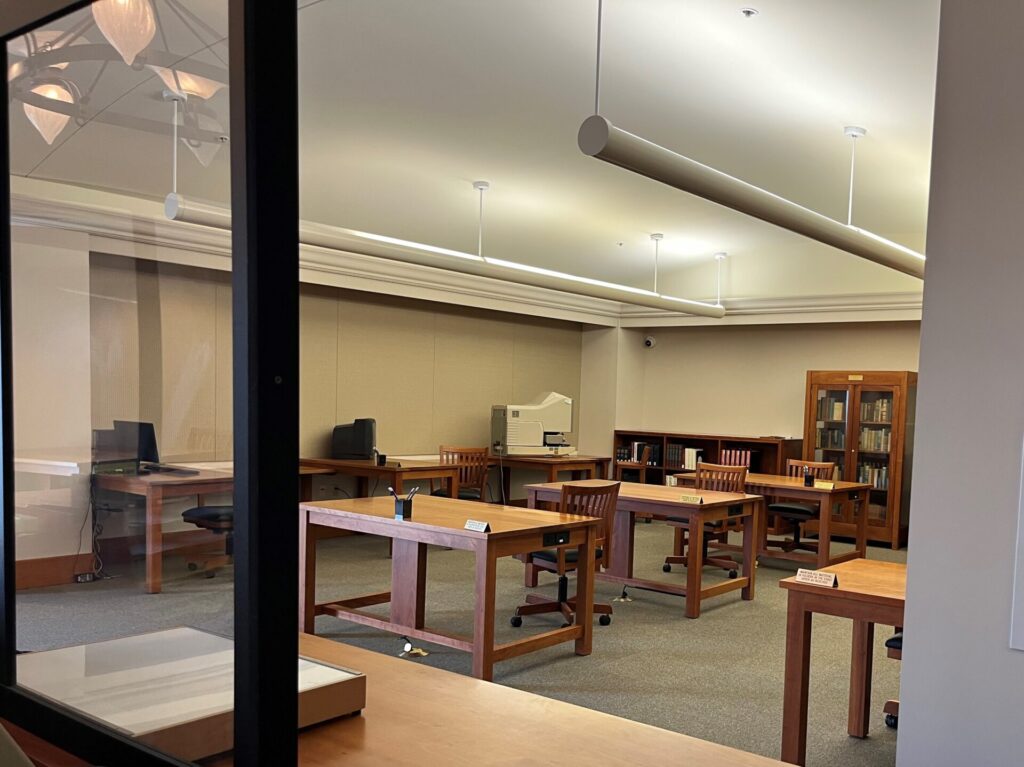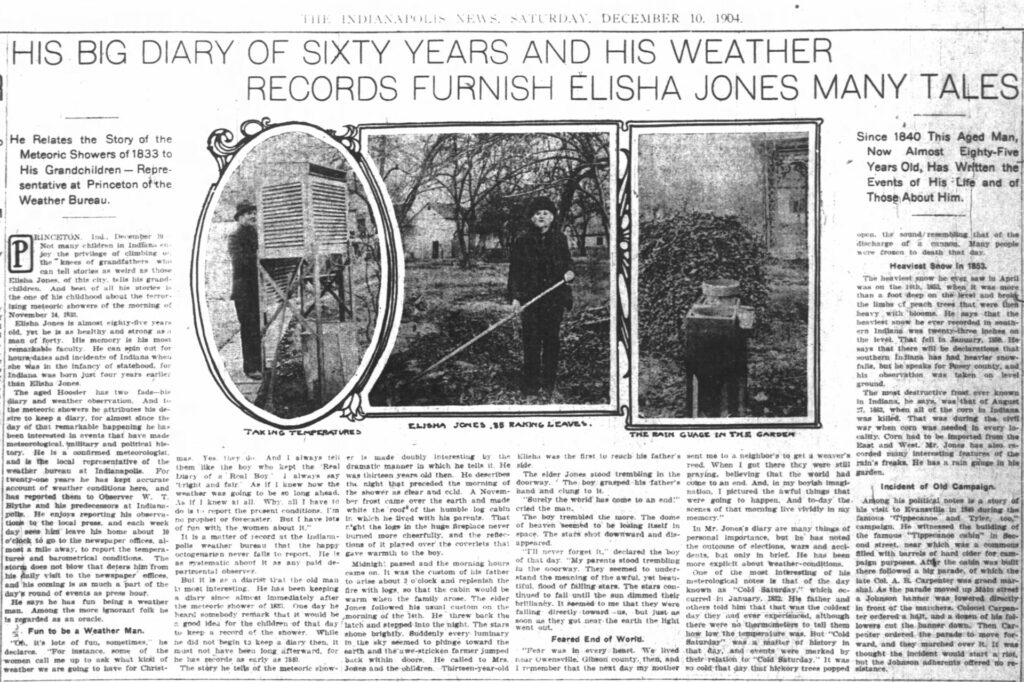
Plan your visit
An Intern’s Experience in Archives & Library
March 31, 2025

Greetings! My name is Rachel Lewchanin. I interned at IHS for the month of January. I am currently a senior history major (with a concentration in public history) at Taylor University. Before arriving at IHS, my main experience related to public history has been working at my university’s archives and special collections. [Public History describes research and presentation of history outside of the realm of traditional academic means, especially in museums, archives, and other non-academic arenas.]
One of the things that I enjoyed about interning here was seeing the similarities and differences between the work that I did this past January and my previous work experiences! It was fun getting to see the behind the scenes of a much larger archive, as well as the organizational systems that are in place to keep track of everything. I was especially excited to see the archives’ stacks— there are so many!

The Stacks (library storage area). IHS
In terms of what I worked on, I had three main tasks. The first of the three was compiling and organizing a list of donated items that need to be processed. The list included things like the accession number for the item, a description, its location within the stacks, and its priority level (from a scale of low, medium, or high). In addition to using IHS’ database, I also went through boxes of miscellaneous books whose information was included in the list.
I also worked in the reading room. For those unaware, a reading room is a place within an archive where researchers come to physically do their research. My job there included checking researchers in and providing them with the materials that they requested. Though my interactions with the researchers were generally brief, it was fun to see what sorts of topics they were investigating.

The Reading Room (research area). IHS
The third task that I worked on ended up becoming my favorite project of the month. This project entailed creating a finding aid for an unprocessed collection. This collection consists of the daily diaries of Elisha Ebenezer Jones, a meteorologist and farmer who lived in Princeton, Indiana.
In part, I was particularly excited to delve into his journals because one of my favorite eras of US history is the Gilded Age and Progressive Era. This timeframe of history, which began in the 1870s and lasted up until the 1920s consisted of many changes both socially, culturally, politically, economically, and technologically. It was exciting to see the ways in which this period (and all of its developments) framed the way that Jones saw and interacted with the world and community that he lived in.

Indianapolis News article about Elisha Jones’ diaries, December 10, 1904. The library received the diaries in 2022 though the earliest on in the collection is 1871. Accessed via Newspapers.com 28 March 2025.
One thing about Jones entries that I found fascinating was just how quickly news and information seemed to travel. Even before the turn of the century, Jones would refer to current national or global events (normally on the days in which they occurred) which surprised me. I hadn’t expected news to travel as quickly as it did, but I was happy to see my assumptions changed.
In total, I had a lovely experience working for IHS. I learned and experienced a lot in my brief time there, which included a greater appreciation for Indiana history. It leaves me excited to enter and experience the world of public history once I graduate!









